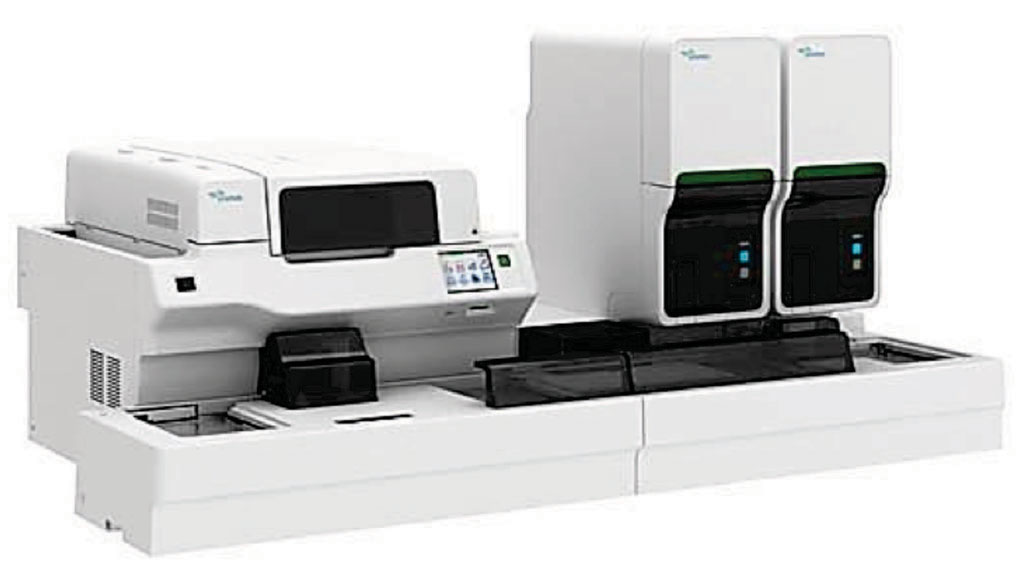Increased Mean Corpuscular Hemoglobin Concentration Scrutinized for Accuracy
By LabMedica International staff writers
Posted on 21 Dec 2016
In daily practice in hematology laboratories, spurious increased mean corpuscular hemoglobin concentration (MCHC) induces an analytical alarm and needs prompt corrective action to ensure delivery of the right results to the clinicians.Posted on 21 Dec 2016
Elevated MCHC is a rare event in routine laboratory practice, but it must be managed properly. In daily practice, the MCHC limit defined by a specific commercial analyzer is fixed at 365 g/L. Exceeding this value leads to a suspicious ‘flag’ and this ‘flag’ has to be considered in an accreditation context to assess the accuracy of reported parameters.

Image: The XN-10 RET automated hematology system (Photo courtesy of Sysmex).
Hematologists at the Hôpital de la Conception (Marseille, France) measured and analyzed in parallel with blood smears from 128 unknown patients with MCHC greater than 365 g/L, all erythrocyte parameters including reticulocyte parameters, chemistry index and osmolality. Differences between optical parameters (RBC-O, HGB-O) and usual parameters (RBC, HGB) obtained by impedance and photometry were also reported.
The scientists used the Sysmex XN-10 RET automated hematology system (Sysmex Corporation, Kobe Japan) that has two different technologies for achieving a full erythrocyte analysis. Erythrocytes are counted using an impedance method with a hydrodynamic focusing system in a fixed volume at room temperature. When required, XN-10 RET can provide a second erythrocyte count (RBC-O) using fluorescence flow cytometry after stabilization and warming at 41 °C in the incubation chamber. RBC-O is a measured parameter, corresponding to total erythrocyte count, including reticulocyte counts, whereas HGB-O is a calculated parameter derived mainly from the RBC-O count and RBC hemoglobin content (RBC-He).
The team classified four groups from their observations: 22 with red blood cell (RBC) agglutination; 17 with optical interference; 18 with RBC disease and 71 others including unclassified and/or patients with hyposmolar plasma. The use of RBC-O and HGB-O permitted efficient correction of the abnormalities when RBC agglutination and/or optical interference were present in 36 of 39 patients. Reticulocyte parameters permitted to elaborate an RBC score that allowed a highly sensitive detection of RBC disease patients (17/18).
The authors concluded that in case of elevated MCHC, their study proves the capability of XN-10 RET optical parameters to provide solutions in the majority of cases, especially concerning RBC cold agglutination and optical interference. The calculated RBC score offers a highly useful tool for managing a blood smear and specifying patients with RBC disease. This original study allows optimization of the workflow in laboratories eliminating manual tasks, guiding biological interpretation in the case of elevated MCHC. The study was originally published online on August 27, 2016, in the International Journal of Laboratory Hematology.
Related Links:
Hôpital de la Conception
Sysmex














